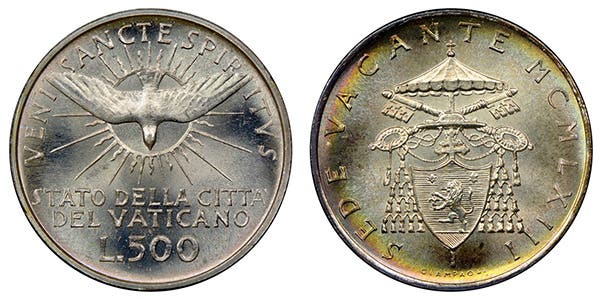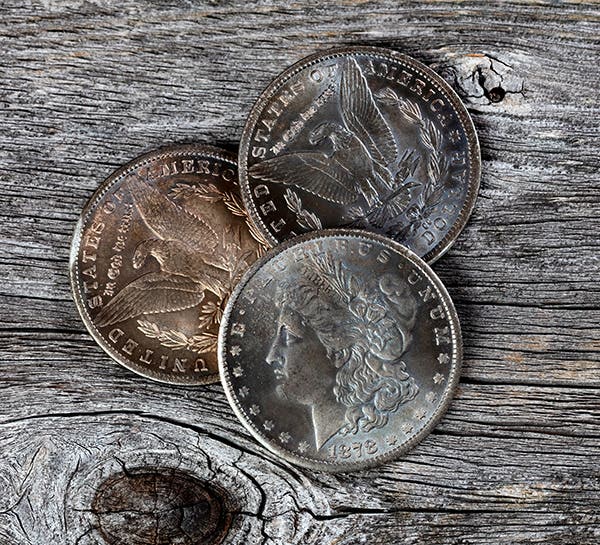Item of the Week: The 1833 Half Cent
Good values can be found in some surprising places. The 1833 half cent might well qualify as a surprising place as it is not a half cent that gets much…
Good values can be found in some surprising places. The 1833 half cent might well qualify as a surprising place as it is not a half cent that gets much attention, but when you consider the factors surrounding it as a good coin for the money it can start to look better and better.
The price of the 1833 half cent has been held back for a long time for a few reasons. First, there are perhaps 30 proofs of the 1833 reported to exist. That is not to say these coins are Prf-65 but even the report that some exist does not help prices.
Also, there are some red and brown uncirculated examples that exist from old hoards. Once again we are not saying MS-67 super coins but rather nice old average-quality uncirculated coins from hoards. This is not that uncommon where later date half cents are concerned. There are some spotty 1835 uncirculated from old hoards as well but these old hoard coins are no problem in today’s market.
Rather, if anything, thanks to the old hoards some of today’s collectors who otherwise could not afford a nice MS-60 half cent or large cent have the chance. The 1833 half cent is simply a date where there are at least some top quality examples known to exist. In the case of a number of other dates, finding a top-quality example can be a real problem. It is almost one of the ironic twists for some earlier coins that if a small number happens to have been found in a hoard, some view that as somehow making the date common. There are any number of nice 1909-S VDB Lincoln cents sitting around. Lots of other expensive and very desirable coins have solid uncirculated numbers also. The 1833 half cent and a few others simply stand out because a few nice examples do exist but do not get confused – that does not make the 1833 a common or undesirable coin.
Like any date, the 1833 needs to stand on its own merits in any grade. In the case of the 1833 half cent, you have a coin that has a good deal of merit worth mentioning. It was a coin with a mintage of just 120,000 pieces. That mintage is less than 50 percent of the mintage of a 1916-D Mercury dime and lower than any cent of the past century.
Even if you go back to mintages of half cents in the 1830s, the 1833 had a low mintage. True, it was not as low as the 1825 or the 1831, but the 1833 had a lower mintage than the other business strikes of the 1830s.
A few things have to be remembered about half cents. Their production historically was irregular and low. They were always a lower priority at the Mint than large cents so they were not produced with the same regularity or in the same numbers. That would suggest that once released a half cent was likely to see some use simply because the denomination was not around in large numbers.
Another point worth noting is that by the 1850s the public was over large coppers. Officials were trying to find a way to a smaller size cent and no one considered continuing production of half cents. When the first Flying Eagle cents were available, lines formed as people rushed to get rid of old coppers, which makes all half cent and large mintages suspect, especially in the case of half cents from the 1830s through the final 1857. All those dates would have likely had some destruction including the 1833.
If you look at the 1833 half cent prices today, you are looking at something of a time capsule as they are unchanged in years with a G-4 at $45 and an XF-40 at $150 and an MS-60 at $300. As half cent prices go, that is about as cheap as any half cent no matter the mintage.
With numbers available and a reputation for being a hoard coin, it is unlikely we will see the 1833 half cent suddenly soar in price. It is, however, a good coin with a very modest mintage and a perfect type coin. It is typical of a number of half cents, all of which are very inexpensive when you consider that for $300, you can get the 1833 in MS-60, and that is about one-half the price of a G-4 1916 Mercury dime, which had more than twice the mintage. Or consider your budget and consider its age and mintage. Then simply ask how many other 120,000 mintage coins from the same era can you acquire for just $300 in MS-60? The answer is very few, and that is why the 1833 is such a good deal and why today’s collectors should be happy there were a few small hoards as without them the 1833 would not be $300.








